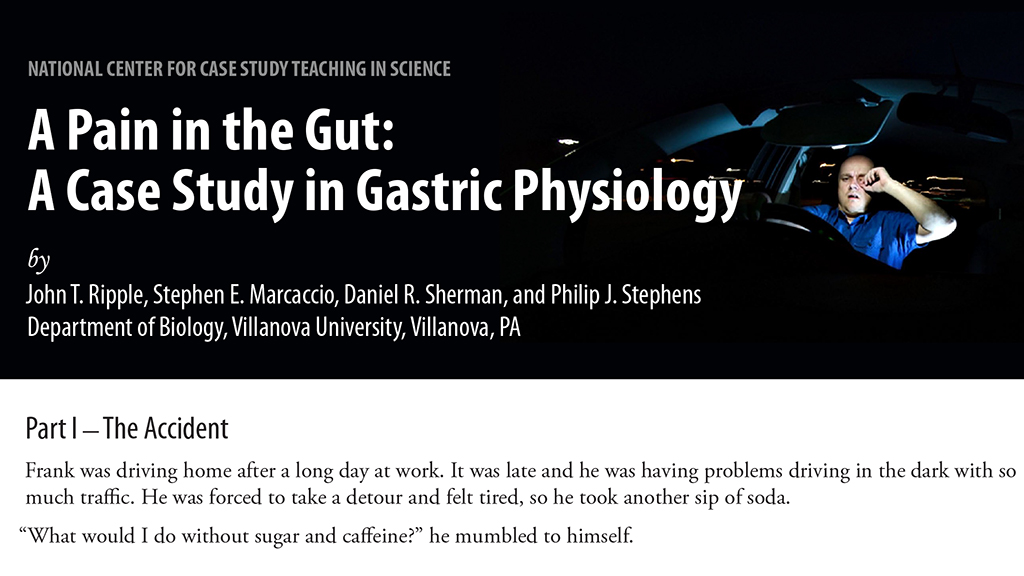Abstract
This interrupted case study in gastric physiology follows the story of Frank, a businessman under a lot of stress who has a car accident while driving home from work one night. Frank has low blood insulin levels and high blood sugar levels that his doctor believes may have contributed to the blurred vision he experienced immediately before the car crash. Frank subsequently develops stomach problems and is found to have high levels of bile in his blood. Students identify and interpret physical signs, symptoms, and medical data as they try to solve the connection between these complaints to formulate a diagnosis. The case was developed for use in a one-semester animal physiology course taken by sophomore and junior science majors. It could also be used in an anatomy and physiology course as well as a general biology course.



